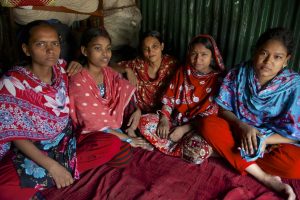Tea Trumbic
Today, women have just three-quarters of the legal rights of men. In 1970, it was less than half. The Women, Business and the Law 2020 report presented results from our recent effort to document how laws have changed since 1970. This exceptional dataset has already facilitated ground-breaking research that shows that a country’s performance on the Women, Business and the Law index is associated with more women in the labour force, a smaller wage gap between men and women, and greater investments in health and education. We hope that sharing the data and reform descriptions on our website will lead to more evidence that will inspire policymakers to change their laws so that more women can contribute to economic growth and development. Analysis of 1,518 reforms across 50 years and 190 economies yields some interesting insights. First of all, significant progress has been made around the world. Second, the pace of reform has varied across regions. The high-income OECD and Sub-Saharan Africa regions have noted the biggest progress both in terms of volume of reforms and improvement in their average WBL index scores. The third interesting finding is that progress has been uneven across the eight different areas of the law measured by Women, Business and the Law. Most reforms were recorded in the areas of workplace protections and laws dealing with working parents. Despite the progress that has been made, more work remains.

While the pace of reform has differed significantly, there has been a substantial improvement in all regions during the five decades covered by the data. Sub-Saharan Africa saw the greatest improvement, with an 81% change in average score between 1970 and today from 38.5 to 69.9. While the speed of reform has differed significantly across economies, some regional patterns prevail. The regional average score in 2019 is highest in high-income OECD economies but in 1970, it was economies in the Europe and Central Asia region that scored the highest. High-income OECD economies made significant strides in legal gender reform throughout the period covered by the data. Indeed, at 70.2%, the percentage change in the average WBL score of high-income OECD economies was the second-highest amongst the regions. The 1970s were a particularly reformatory decade for gender laws in high-income OECD economies and, by the end of the decade, this region had surpassed Eastern Europe and Central Asia to claim the top spot, which it retains today. These two regions accounted for half of the total reforms recorded between 1970 and 2019.
The slow progress of the Middle East and North Africa region is also notable. With an average WBL score of 31.0 in 1970, women in this region had less than one-third of the number of rights as men in the areas covered by the WBL index. While progress has been slow, the average score in 2019 is 49.6, indicating that progress has been made. Much of the advancement that we have seen in women’s rights in the region has happened in the recent past; throughout the 1970s, 1980s and, to a lesser extent, the 1990s, the average WBL score in the region remained relatively flat. In the twenty years from 2000 until today, the equality of economic opportunity for women in the region has improved. Nonetheless, today, women in the region still face significantly more legal obstacles relative to men in the region and, indeed, relative to women in other parts of the world.
The reform efforts focused on different areas of the law. The Women, Business and the Law indicators are constructed around women’s interactions with the law as they begin, progress through, and end their careers. In the last five decades, the most reform happened in the Workplace indicator—322 reforms improved the average from 17.6 to 78.4. These reforms focused on introducing legislation on protections against sexual harassment, as well as preventing discrimination in employment. The reform effort intensified in the mid-1990s. Most reforms in this area were implemented by Sub-Saharan African countries. The next biggest improvement was in the Parenthood indicator where 310 reforms improved the average from 17.2 to 53.9. While there were significant gains in all areas, gaps remain, especially in the areas of Pay and Parenthood.
The progress across regions and indicators has been uneven but there are some countries whose progress stands out above others. The top ten economies that saw the greatest increase in their score over the last 50 years are São Tomé and Príncipe, Spain, South Africa, Belgium, Togo, Portugal, Luxembourg, Dem. Republic of Congo, Ecuador and Lao, PDR. These countries represent all income groups and come from four regions: East Asia and Pacific, Latin America and the Caribbean, OECD high income, and Sub-Saharan Africa. Together, they implemented 148 reforms since 1970. São Tomé and Príncipe improved its score by 67 points going from a low of 18.8 to an impressive 86.3 by implementing 15 reforms. Some of the reforms include introducing new laws which give women more equal standing with men. Two of the countries listed—Belgium and Luxembourg—have achieved gender equality in all of the areas measured. In 1970—the earliest year covered by the WBL dataset—the WBL score in Belgium was 38.1. Starting in 1972, Belgium implemented 16 reforms in the eight indicator areas and achieved a score of 100 in 2012. This illustrates the improvements that have been made in Belgium, and, indeed this holds true for many economies. Today, only eight economies around the world receive a score of 100: Belgium, Canada, Denmark, France, Iceland, Latvia, Luxembourg, and Sweden.
We documented more than 1,500 reforms enhancing women’s economic empowerment that were passed in every country during the past 50 years. But more is needed to reach legal gender equality at the global level. What can we do to speed up reforms?
The World Bank Group’s Women, Business and the Law examine laws and regulations affecting women’s prospects as entrepreneurs and employees across 190 economies. The project’s goal is to inform policy discussions on removing discriminatory laws and promote research on enhancing women’s economic inclusion. – World Bank Group




